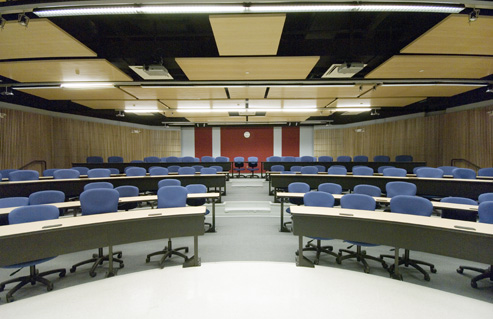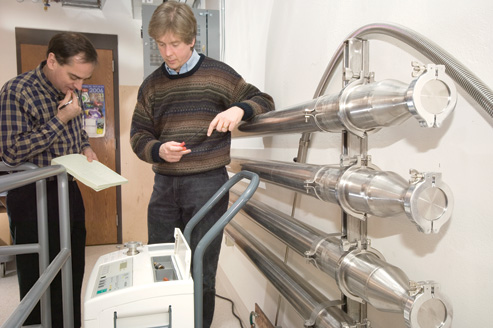 |
Improving the Spaces
Where Science Is Taught
In 1967, all of Smith’s science departments were brought together in the Clark
Science Center, a series of buildings that includes McConnell Hall. But by 2005,
McConnell, which houses the center’s busiest classrooms and auditorium as well
as the computer science, physics and astronomy departments, was due for renovation.
Thanks to much-needed modifications, McConnell now features new state-of-the-art classrooms equipped
with audio-visual upgrades, including Internet projection capabilities, improved lighting systems and
versatile teaching spaces. The refurbished auditorium accommodates 95 people with moveable furniture
that can be adapted for different presentations and lectures. Equally important are the updates to the
building’s airflow systems, and renovations of its basement and first-floor classrooms and labs,
as well as the machine shop.
“We have moved into a new era of experiential, hands-on learning, and these new teaching spaces
are designed for more interactive teaching,” says Thomas Litwin, director of the Clark Science
Center.
Litwin, who is also a member of the college’s sustainability committee, was involved in the renovations
with an eye toward the building’s upgraded use of natural resources. “Anything we have done
in McConnell has been a step in the right direction in terms of energy efficiency,” he notes, though
he emphasizes that those efforts were restricted by the original infrastructure of the 38-year-old building.

Recently completed renovations in McConnell Hall include
more flexible teaching spaces and state-of-the-art research laboratories. Below,
Nathanael Fortune, associate professor of physics, right, and John Kosakowski of
Smith’s
Science Center Machine Shop discuss plans for the installation of a research cryostat—a
special low-temperature refrigerator used to cool scientific samples—and its
connection to newly installed stainless steel pumping lines. Photos by Fish/Parham.

|
 |























